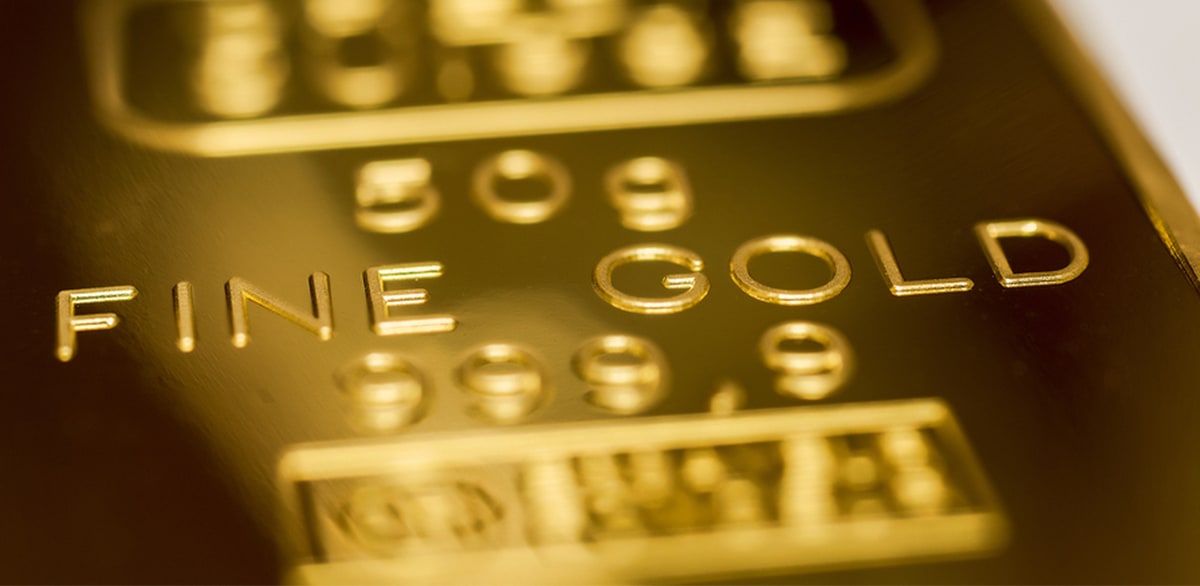
There are plenty of great reasons to invest in precious metals and gold bars are no exception. As with any investment, there are both advantages and drawbacks to consider. If you are considering whether or not gold bars are a good investment, it helps to lay out some of the pros and cons so you can make an informed decision.
| Pros | Cons |
|---|---|
| Global Commodity | No Rarity or Collection Value |
| Long Term Stability | Risk of Buying Low Quality of Fake Bars |
| Inflation Hedge | Storing Your Gold Bars |
| Diversification | Storing Your Gold Bars |
| Tangible and Straightforward | Confiscation risks? |
| Options for All Levels of Investor |
Are Gold Bars Worth Buying?
The short answer is yes. In today’s uncertain market and with political strife growing around the world, gold is an excellent way to diversify your portfolio beyond stocks and bonds. Gold is considered a safe haven investment because it’s a great hedge against rising inflation, declining currency values and market strife.
Like silver bars, gold bars are a popular investment that comes in a variety of weights and sizes that appeal to novice and serious investors alike. Because bars require less processing than minting coins, the premiums paid on gold bars are often a smaller percentage than gold coins. Gold bars are also easy to liquidate when you need cash.
A Closer Look at the Pros of Buying Gold
PRO: Global Commodity:
Throughout history, gold has been considered a global currency and still holds value today. In fact, the U.S. government used to back its currency with gold in what is known as the Gold Standard. Now that more currencies, including the U.S. dollar, are no longer tied to gold, the currencies are subject to wild swings in value, especially during times of political upheaval. Gold offers stability in a world where currencies are constantly in flux and not represented by a physical asset.
PRO: Long Term Stability:
Gold might not rise and fall as dramatically as stocks or crypto currencies, but that’s not a bad thing at all. In fact, gold has a very low long-term volatility, making it a much more stable investment that is far less likely to sink under the tides of economic uncertainty.
PRO: Inflation Hedge:
When money sits in a savings account, it loses value over time as inflation grows. During times of rampant inflation, that loss becomes clearly felt when everything from a loaf of bread to a gallon of gas becomes noticeably more expensive. Many people invest in gold bars to protect their assets against inflation by purchasing a tangible, finite commodity.
PRO: Diversification:
The old cliche about not putting all your eggs in one basket is just good common sense when it comes to your money. Gold bars offer a great way to diversify your portfolio so you can have a mix of stocks, bonds and precious metals. For instance, if the stock market hits a rough patch, you’ll be happy to know you have a portion of your assets in gold bars.
PRO: Tangible and Straightforward:
Investing in gold bars is straightforward. You decide how much you want to buy and make the purchase. It’s a tangible asset, so no matter what happens in the market, you own your gold bars. While the precious metals market is driven by complex global conditions, investing in gold is not complex at all. You buy a certain quantity and hold onto it as its value grows. When it’s time to sell, gold bars are easy to liquidate. You choose the right time to buy and sell.
PRO: Options for All Levels of Investor:
Whether you are a longtime investor or just getting started in precious metals, one of the pros of buying gold bars is the options available. Customers can buy bars as small as one gram all the way to up to a kilo or more. These options open the door for almost anyone at any income level to diversify their portfolio with gold bars.
Learn more by reading: The Most Popular Gold Bullion Bars to Buy

Everything you need to know to get started in Precious Metals
Learn how precious metals can strengthen your portfolio, protect your assets and leverage inflation.
Request the Free GuideThe Cons: What are the Downsides of Buying Gold Bars?
Despite the many advantages, buying gold bars does have a few cons to keep in mind when you are considering precious metals.
CON: No Rarity or Collection Value:
Gold bars are produced in a very straightforward way. The metal is melted and pressed into bars and stamped with the weight, mint and metal content. There isn’t a lot of artistry or rarity, so gold bars will only be worth their weight in metal content. However, gold numismatic and rare coins can hold value well beyond their metal content, making it a great idea to diversify your precious metals portfolio with coins in addition to bars.
CON: Risk of Buying Low Quality of Fake Bars:
As gold rises in popularity, so does the number of unscrupulous sellers looking to take advantage of unsuspecting buyers. It’s up to you to make sure you are buying gold bars from a reputable gold dealer that will stand behind their product and offer a buyback policy. Before you invest, speak with one of Scottsdale Bullion & Coin’s experienced advisors. They can help you secure the highest quality precious metals and have an industry leading buyback policy so you can invest with confidence.
CON: Storing Your Gold Bars:
Owning gold bars requires having a safe place to store your investment. Whether you are paying an outside party for storage or storing yourself, your storage will need to scale as you purchase more. If you ever need to move your gold bars, transportation could be expensive as well.
CON: Privacy and Tax Reporting:
Bullion bars and coins have many reporting requirements such as a 1099 tax form and social security numbers being attached to transactions. Investors looking for more privacy may want to consider circulated, low grade coins and high grade coins. These are not only completely private investments, but have potential to substantially increase in value over the metal content. Learn more about how to maintain your privacy by reading this helpful precious metals investment guide.
CON: Confiscation risks?:
Did you know the federal government once confiscated gold bullion from its own citizens? The Emergency Banking Act of 1933 set a dangerous precedent in the United States when Congress, under the urging of President Roosevelt, ordered Americans to hand over their gold in exchange for the same amount in cash. The move was intended to replenish the government’s own dwindling supply of gold.
While the country has moved away from the gold standard, you have to wonder how bad things need to get before the government decides once again it wants to build up its gold stores. With out of control inflation and a declining U.S. dollar, will history repeat itself once again and put your gold bars at risk? Only time will tell.
📚 Suggested Reading: Bullion vs. Numismatic Coins: What You Should Know Before Investing
NOTE: When the U.S. government confiscated gold bullion in the 1930s, many gold coins were exempt from seizure because they held collection value. If the government ever decides to confiscate gold again, you should make sure at least part of your holdings are in investment grade coins.
Learn more about gold confiscation by watching this video: Gold Confiscation: A Timeline of Events
What is the Difference Between Gold Bars and Gold Stocks?
Buying gold bars means you physically own any gold you purchase. Gold stocks are quite a bit different. When you buy gold stocks, you are investing in gold mining companies, betting that their production will yield profits. If it doesn’t, you lose your money. It’s a lot like investing in any other company. You can choose which operations to invest in and sell at any time, although you’ll never hold any actual gold in your hand by investing in gold stocks. Physical gold offers more stability in the long term.
What is the Difference Between Gold Bars and Gold ETFs?

Gold ETFs (Exchange Traded Funds) are another way to invest in gold without actually owning any physical gold. The actual gold someone invests in is held by an organization called the SPDR Gold Trust. SPDR is one of the world’s largest holders of gold with well over 24 million ounces of gold stored in its vaults.
An ETF gives investors an opportunity to invest in the performance of gold, but makes it impossible for investors to redeem any of their holdings in physical gold. If you invest in a gold ETF, you will only ever get cash based on gold’s performance.
This is much different than owning physical gold, which over the long term, acts as a hedge against inflation and typically increases in value as the dollar’s worth declines. Of course, the SPDR knows this, which is why the organization itself hoards the precious metal but will not pay out investors in actual gold.
Should You Buy Gold Bars?
Is now a good time to buy gold bars? To find out the right answer for you, speak with a precious metals advisor who can guide you through the options and create a customized investment plan to meet your needs. There’s no question that gold is a good investment, but there are plenty of options beyond gold bars and you’ll want to know all of your options. Get in touch with Scottsdale Bullion & Coin to schedule an appointment with one of our precious metals advisors.
How Much is a Gold Bar Worth?
The value of a gold bar is determined by its purity, weight and the current spot price. This price is listed in ounces, so if you have several sizes of gold bars or aren’t sure about the purity, schedule an appointment with Scottsdale Bullion & Coin to get an accurate appraisal. Don’t sell gold without speaking to someone who can help you get the best price possible in the current market.

